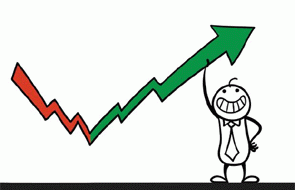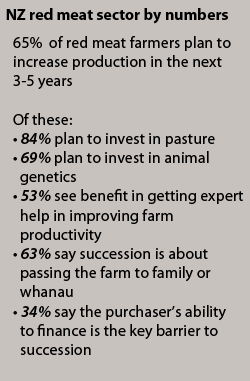
By Graham Turley*

When the first shipment of red meat sailed from Dunedin in 1882, it was a turning point for New Zealand’s economy.
Now the red meat sector faces another turning point having lost out to dairy as NZ’s star export.
For the past two decades red meat’s low profits, lack of reinvestment, wide differences in performance between farms and a troubling misalignment between farmers, processors, and markets, have seen its glorious past recede into memory.
On-farm production figures show how the gap with dairy has grown.
Between 1993 and 2013 dairy farmers increased per hectare output from just over 600kg of milk solids a hectare to over 1,000kg, while production of meat and fibre per hectare was almost flat, averaging about 130kg.
The former prime cut of the export crown might have lost some of its premium but let’s not forget it is still a premium product.
There are signs that the sector is addressing some of the issues that have held it back and is looking to take full advantage of better market conditions through greater global demand for protein.
But, more importantly, advances in agronomy and genetics are increasing production per hectare.
As New Zealand’s largest rural bank, ANZ sees more rapid productivity gains ahead in red meat than in dairy. Already, many operations are achieving outstanding results way in excess of the averages.
The top 20 per cent of farmers are achieving productivity of around four times more than the average, irrespective of land class and location.
ANZ’s recent Privately-Owned Business Barometer survey (of 779 farmers, including 374 red meat farmers) and discussion groups around the country supports what we’ve seen around on-farm investment. Participants have many reasons to be upbeat.
New Asian markets for meat are strong and getting stronger. The world will demand at least 60 per cent more agricultural output by 2050 compared with 2005-07. Rising incomes – particularly in the growth markets of Asia – are driving up per-capita calorie consumption and shifting individual diets from carbohydrate-based to protein-based.
Over the same period the world’s population will grow from 7 billion in 2011 to 9.3 billion in 2050 and increasing use of biofuels will account for up to 7 per cent of agricultural demand.
Participants agreed the sector needed to invest in productive capacity of the land and consolidate to deliver the scale necessary to capitalise on the opportunity. The industry balance sheet is strong and ANZ believe relatively modest investment in productivity and consolidation would drive transformational returns.
Of the survey respondents, 65 per cent expect to increase production and 83 per cent of those say they will do it through increased pasture and forage productivity – a higher level than in dairy. There was also a greater focus on lifting performance through animal genetics than in other sectors.
One impediment to growth that remains unresolved is certainty of supply.
Currently processors and exporters have to compete aggressively in two markets – to sell product offshore while competing for livestock to supply sales onshore.
They have to win export market share and price premiums with no certainty of supply of stock. In this environment, it is very difficult to invest in either marketing, product differentiation or processing efficiency.
Finding a solution is one of the main goals of the pan-industry Collaboration for Sustainable Growth initiative which will explore the development of new livestock supply arrangements to provide greater certainty to both farmers and exporters. Investment in greater productivity and sustainability on farm would also help assure certainty of supply.
“Profit opens up options, so we need more profit,” one Waikato farmer told ANZ, summing up what appears to be the new driving principle in red meat.
Most of the farmers ANZ spoke with in Barometer focus groups had at least one active strategy to get a better return; whether it be by maintaining highly productive pasture; working on delivering stock to meet the buyer’s specification, or deepening relationships with the processor. They will lead the industry into a new era of profitability.
From the farm gate to the customer’s table, red meat - NZ’s one-time export star - is again cooking with gas.
-------------------------------------------------------------------
Graham Turley is ANZ New Zealand Managing Director Commercial and Agri. This article was first published here
4 Comments
The world was given a shock when global phosphorus prices were raised by 800% in 2008. At a stroke, it became clear how dependent we are on phosphorus for our food supply. Phosphorus is an ingredient in artificial fertilizers and is indispensable in modern farming.
http://en.wikipedia.org/wiki/Peak_phosphorus http://oilprice.com/Metals/Foodstuffs/Doomsday-Will-Peak-Phosphate-Get-… http://www.sciencedaily.com/releases/2014/02/140203083830.htmProbably the best thing that has happened to sheep and beef is the dairy boom. It has created a shortage of red meat. It is supply and demand.
Ah yes the holy grail that as good tax payers and exporters we must find increasing production. Unfortunately the dairy farmers who have rushed down this track and changed their farms to industrial like factories have chickens winging home to roost. This is not sustainable for many reasons.
Increasing production does not necessarily mean increasing profit. I find it disturbing to learn such a large number of meat and fibre producers falling for this line of thinking. Perhaps they arent and it is just spin and bull from the banksters. Wouldnt they just love it if we all go out and borrow more for machinery, seeds, fertilizer, fancy genetics etc etc.
why would I produce more into a falling market?
We welcome your comments below. If you are not already registered, please register to comment.
Remember we welcome robust, respectful and insightful debate. We don't welcome abusive or defamatory comments and will de-register those repeatedly making such comments. Our current comment policy is here.